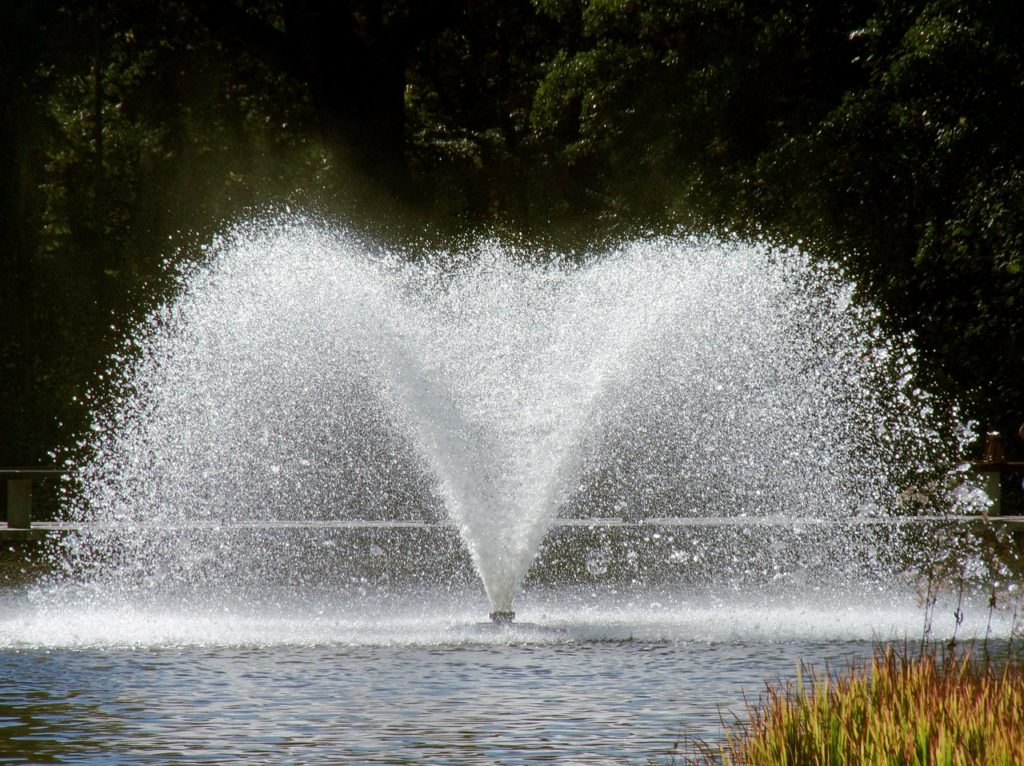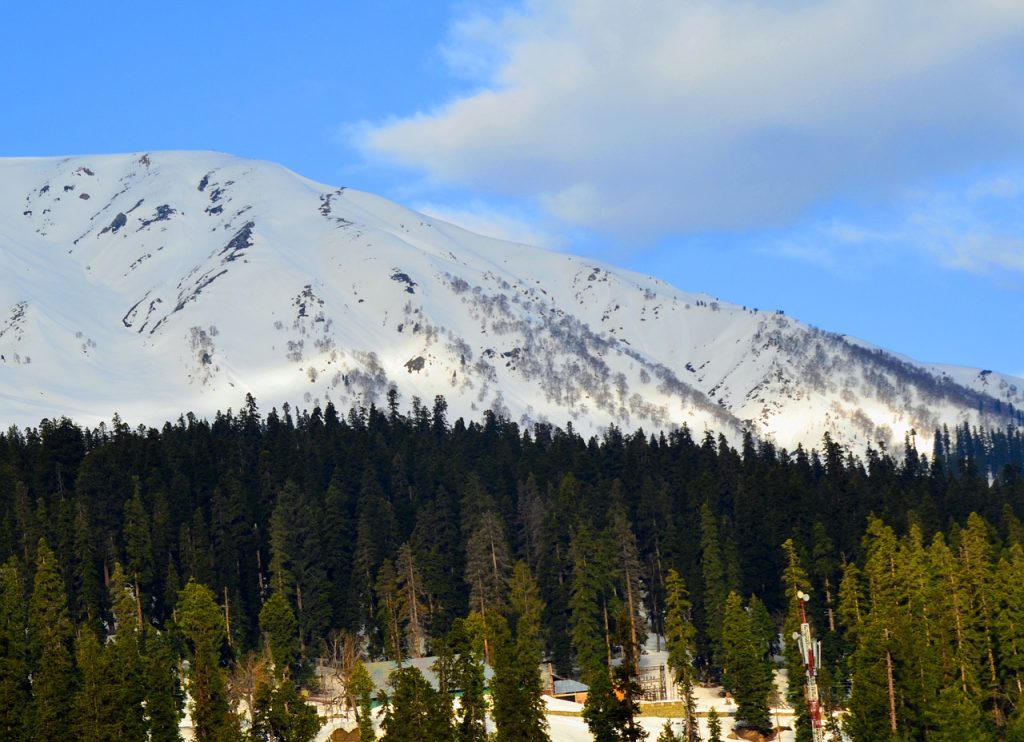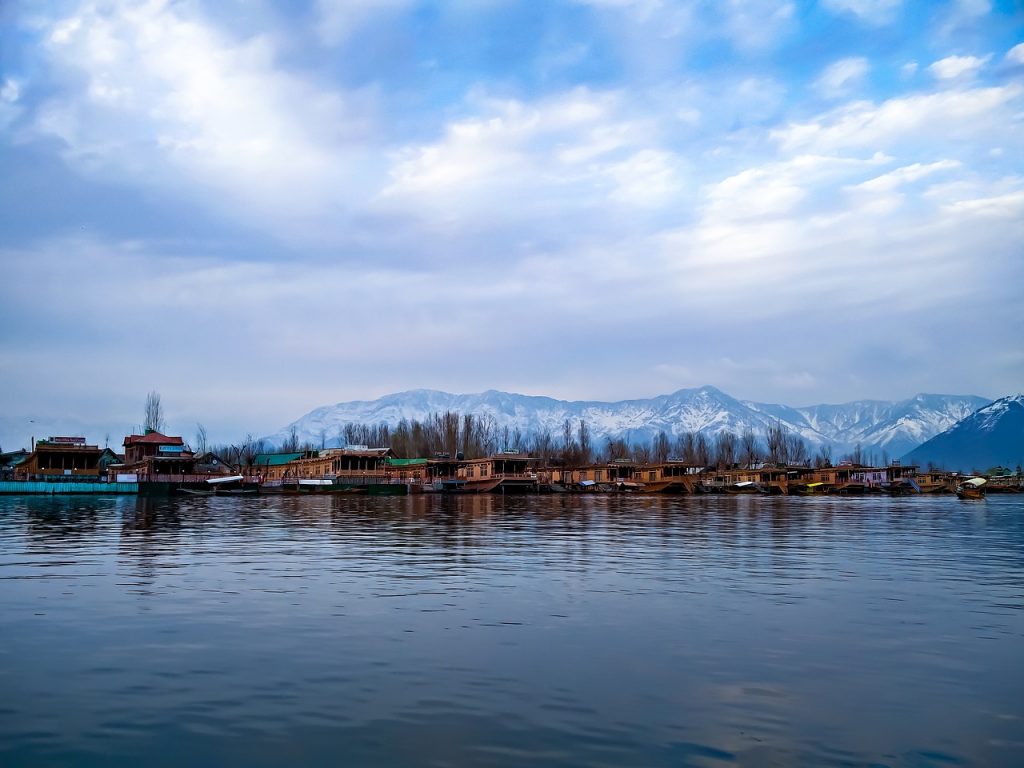Srinagar, an ancient city with a rich history and culture, is known as the city of gardens. These gardens were constructed by various Mughal kings and princes. Construction of these gardens was considered a favorite past time of Mughal imperials. The Mughal gardens are heavily influenced by Persian architecture. They have a common layout that comprises canals, fountains, pools of running water, several species of shade-providing trees, flowers, fruits, and aromatic grasses. The credit of the architecture and floral designs of the Mughal gardens primarily goes to Emperor Shah Jahan.
Here are five famous Mughal gardens in Srinagar.
- Nishat Bagh
Nishat Bagh is an exceptionally beautiful example of Mughal landscaping and horticulture. Asaf Khan, the brother-in-law of Emperor Jehangir, built Nishat Bagh in 1633. It is one of the most prominent gardens built by the Mughals in India. Built on the eastern bank of the Dal Lake, the lowest terrace of the Nishat Bagh is connected to the Dal. It is divided into 12 terraces, which represent the 12 zodiac signs. Several chinar trees have been planted on these terraces; many of them were planted by the Mughals themselves. It is a wonderful garden containing flower beds, fountains, and terraces provide an excellent insight into the influence of Persian culture on Mughal architecture.
- Shalimar Bagh
Closed on Fridays. Timing- 9am to 7am. Entry fee- Rs.10 per person
Historians believe that Shalimar Bagh was built by Emperor Jehangir upon and around a preexisting palace built by King Pravarsena II around the 2nd century CE. In the 16th century, Jehangir built a royal garden on the ruined palace on the banks of the Dal Lake; however, retained the name Shalimar. It is attached to another beautiful garden named Faiz Baksh, built by Shah Jahan. It is divided into 2 sections; the lower three terraces are known as Diwan-i-aam, while the upper two terraces as Diwan-i-khas. The lower terraces were for the common people, while the upper ones for the Emperor and his courtiers. There are pools and fountains on the edge of each terrace. Shalimar is a well-planned garden and is the pride of the Kashmir valley.
- Pari Mahal
Closed on Friday. Timing- 9.30am to 5.30 pm.
The legacy of landscaping and building gardens continued after Shah Jahan as well. His eldest son Dara Shikoh built Pari Mahal in 1650 AD. It sits on the top of the Zabarwahan mountains and is close to the Dal Lake. It is built according to the Persian architecture and the Charvagh concept. The garden around Pari Mahal is divided into 7 terraces, and unlike the Mughal gardens, it has no water fountains. Pari Mahal means ‘abode of the fairies’. A fine example of Mughal architecture and gardening, it initially was a Buddhist monastery ruin. Dara Shikoh built Pari Mahal on these ruins and dedicated the structure to his teacher Mulla Shah. The entrance of Pari Mahal consists of an arc followed by a dome. On the other side of this dome is a series of rooms and chambers.
- Chashma Shahi
Closed on Fridays. Timing- 9am to 7pm. Entry fee Rs. 10/person
Chashma Shahi was built by Ali Mardan Khan during the reign of the Mughal emperor Shah Jahan. It was built for Shah Jahan’s eldest son Dara Shikoh. It is built on the slopes of the Zabarwahan Mountains around a natural spring. This natural spring starts originates on the first terrace and later makes its way across the second and third terrace. On the 2nd terrace there is a fountain on the flow of the spring. According to a story, Mumtaz Mahal, the wife of Emperor Shah Jahan fell seriously ill and recovered miraculously when she was made to drink water from this spring. This prompted the royals use the spring regularly. Pari Mahal lies to the east of Chashma Shahi where Dara Shikoh used to learn astrology.
- Achabal Garden
Achabal lies about 58 km to the south of Srinagar. Achabal, which means ‘place of princes’, is a must-visit for nature lovers and another amazing example of Mughal architecture. It is built at an altitude of 1677m. Similar to other Mughal gardens, Achbal is designed in the Persian style. The tall chinar trees lend a royal appearance to the entire area. With the Charbagh concept of Persian architecture, Achabal is divided into 4 terraces. The main feature of this garden is its spring, which is a main source of irrigation for the entire garden. The spring is connected with canals, branched canals, and pavilion, all lying within the boundaries of the garden. The unique feature of this garden is its location and natural setting. The garden continues to have the live old water spring, which the other Mughal gardens lack.
Travel Blog By Ruturaj Tamhane



